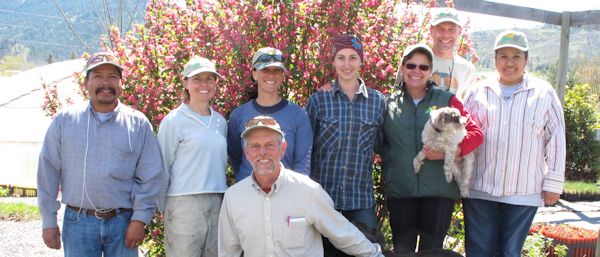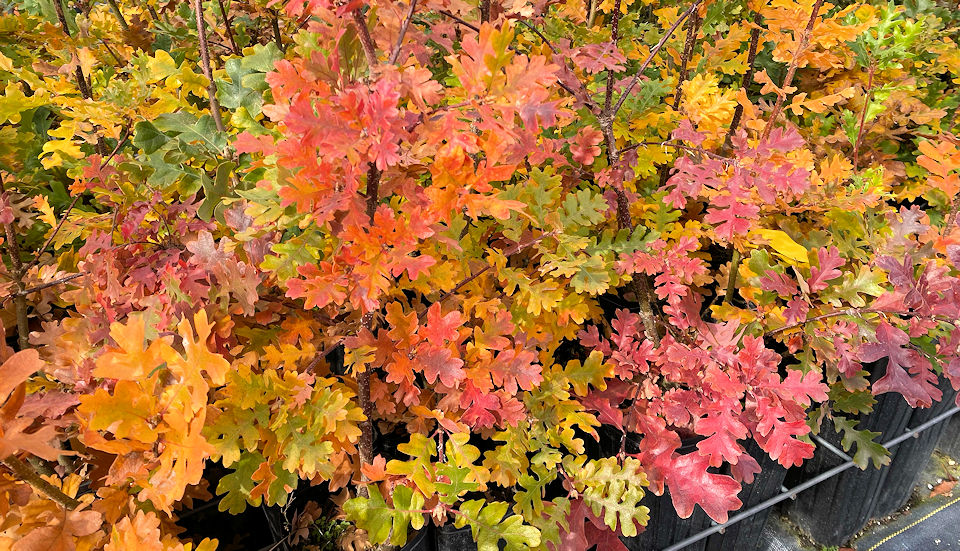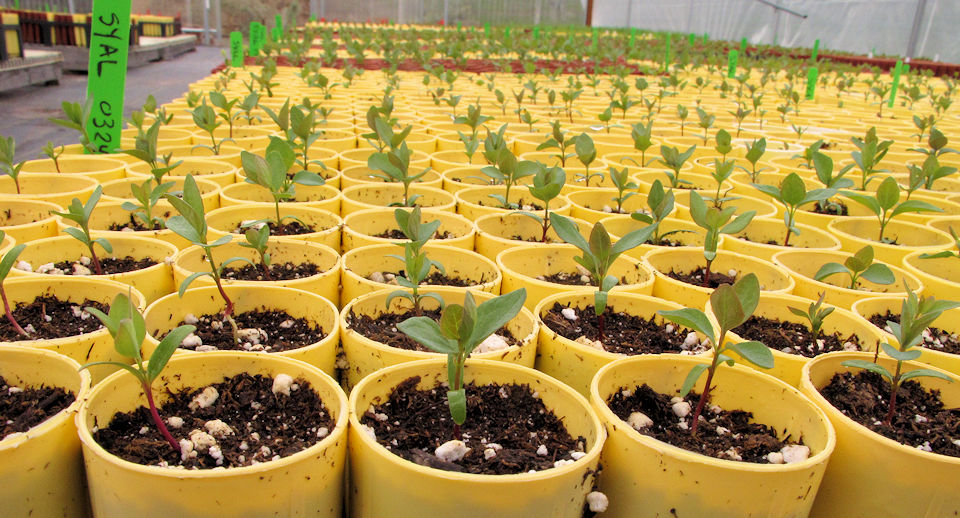What It Takes to Grow Healthy Native Plants – “Dirt and Pots!”
The majority of plants native to the lands east of the Cascade Mountains are adapted to sites and soils that can get quite dry for much of the year. Other than the species found in the saturated soils near or in streams, rivers and ponds, most of our natives will struggle or die in soils that are too wet and lacking oxygen. In the Derby Canyon Natives nursery all of our plants are grown in containers; the size and shape of the container, as well as the growing media we use, are crucial to the good growth of our dry-side natives.
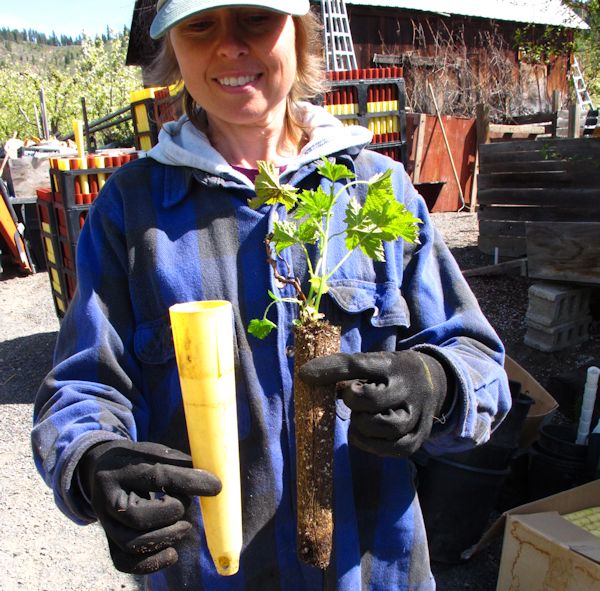 Lisa shows off a 10 cu. in. tube, or “cone-tainer”
Lisa shows off a 10 cu. in. tube, or “cone-tainer”
Most of our plants, and all of our seedlings, are grown in relatively narrow, tall containers (see the tube in the picture above). This shape ensures that the amount of the root zone that remains saturated with water after irrigating is quite small, relative to a shorter, broader pot. Species that are more root rot susceptible, such as penstemons, purple sage, bitterbrush and buckbrush (Ceanothus velutinus), will often decline and die for me in the common 3.5″ square and deep pot. That is a main reason for growing almost all of our plants in tall, narrow containers. For us, the main ones used are the 10ci tubes, 40ci “Deepots”, and, for increasing numbers of larger plants, the nominal 1-gallon Treepot, all manufactured by Stuewe and Sons of Corvallis, Oregon (shameless plug! Maybe I’ll get a a discount!)
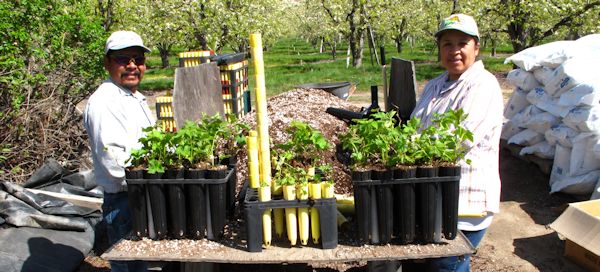 Juan and Rosa transplanting thimbleberry from 10ci to 40ci tubes
Juan and Rosa transplanting thimbleberry from 10ci to 40ci tubes
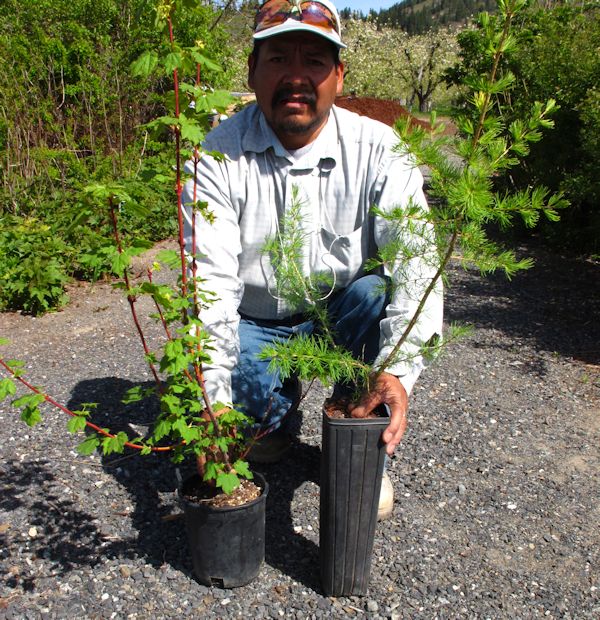 Juan with a larch in a Treepot next to a vine maple in a conventional #1 (ca. 1 gallon) pot
Juan with a larch in a Treepot next to a vine maple in a conventional #1 (ca. 1 gallon) pot
Equally important to the root health of our natives is the growing media we use. A good growing mix should retain water and nutrients well and have a structure with enough macropores to let air reach the roots. We don’t use topsoil even when we have it; most “topsoil” sold in these parts lacks any organic matter and is little better than sand as far as the plants are concerned, and at twice the price! Real topsoil, which I get and stockpile when I remove a piece of orchard, is the top 6-8″ of the soil, which contains all of the organic matter and most of the nutrients (and weed seeds and roots!).
Instead, we mix our own media from three or more of the following five ingredients:
- Bark -small to medium chunks, screened to remove the fine particles, usually from Douglas fir
- Coir – a natural fiber from coconut husks. The larger fibers are used to make ropes, doormats and more, but the finer particles, once a waste product, are a fine peat replacement for the horticultural industry (and sustainable, unlike the stripping of the peat bogs)

From the left: perlite; pumice; compost; bark; coir
- Compost – I use a woody compost made locally, well heated, turned and screened, that uses lots of yard waste and Leavenworth’s biosolids (thanks, neighbors!)
- Perlite – a heat-expanded volcanic mineral, we add it to some mixes for smaller containers to maintain good aeration
- Pumice – the airy volcanic rock, very good for aeration and drainage. There are deposits in the area that were ejected long ago from Glacier Peak. I have loaded my truck with this material (with a permit) and then screened it; a lot of time and effort, so now I buy it bagged
We use commercially prepared, peat-based mixes to start our seeds in, but being able to control the composition and quality of the bulk of our mixes has paid off in better plant growth.




